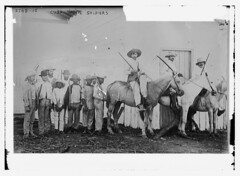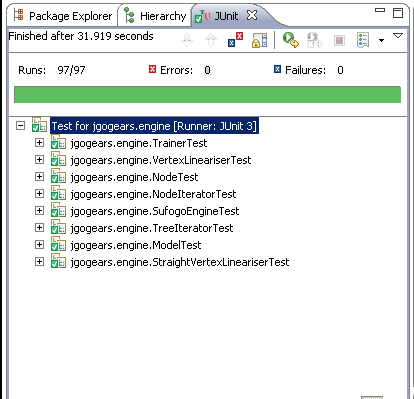I've been playing with
MugShot, the
RedHat's venture into the social networking sphere. I was initially impressed by the site, which has builds a dynamic (if HTML-only) website while asking for really very little information and not asking for any confidential information (i.e. no asking of gmail passwords to pester friends to join up). The website is slick and glossy, if a little heavy on my dialup connection.
The more I use MugShot, however, the more I see it supporting rather than undermining lockin in the social networking sphere.
1 Login with Gnome account or local username/passwordWhile many of MugShot's Gnome account initial target audiance may have had Gnome accounts suitable for logging into to MugShot, I'm guessing that a really small proportion of people they knew did. Login using openid or similar would be great.
2 Supporting only a small number of services, and not flexiblyIt's great that mugshot supports
delicious. However, by only supporting a single service of this kind, not only are my
magnolia bookmarks unsupported, but the current delicious control over the social bookmarking market is strengthened. I understand that the differences between the delicious and magnolia APIs are largely cosmetic, and find it hard to believe that much effort would have been required to support it. Similarly, there are a number of exciting competitors to youtube, amazon, facebook and other MugShot supported services which could be supported with very little time and effort on the part of MugShot.
The services that are added, use a one-size-fits all approach, when I know of no two long-term users of (for example) facebook who use it in the same way.
3 No machine-readable exportThere is (that I can see) no constructive machine readable export of any kind from MugShot. Two basic RSS feeds (which aren't advertised in the GUI). No RDF/FOAF, no blogroll for integration into the next generation of social networking and web services. MugShot may see itself as the top of the social networking heap, but until that's evident to the rest of us, they need to play nicely with third parties, both below them and above them on the heap. Failing to export anything useful in a machine-readable format is not playing nicely.
4 No "deep connection" back to the data sources Having configured MugShot, I can see lots of books, photos and links that those in my network find interesting. But even though Mugshot can tell the difference between books, photos and links when it's displaying them and knows about the accounts I have on services for bookmarking, favouriting or commenting on books, photos and links it doesn't offer functionality to bookmark, foavourite or comment on them. By not driving content and information back to the underlying datasources, MugShot undermines the underlying services and devalues them, in so doing it also (a) devalues the commitment and investment I've made to those systems and (b) reduces the likelihood that those services will go out of their way to help MugShot.
5 "Invitation to tinker" only covers look-and-feelMugShot has a great system for creating skins for music players, and several hundred people appear to have accepted this invitation to tinker and made come great skins. Unfortunately only cosmetic changes are possible. What I would like to see is a generic feed subscription creator which let me add new services that MugShot could listen to. Just like the music player skins, only a very small proportion users would bother, and most of those who did would not produce anything to shout about, but with a feed subscription creator, each success would lead to a whole new service that Mugshot could access and channel to their users. Such a effort would completely alleviate issue problems with the small number of supported services.
MugShot has an invitation to tinker in the traditional open source web 1.0 sense, with a wiki and version control system, but it doesn't have an invitation to tinker in the web 2.0 sense in which users can scratch their itch (and make the project better) from within their browser in the way the
yahoo pipes, for example, does.




